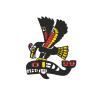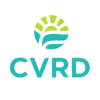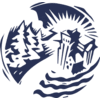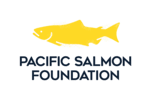We want fish-friendly, swimmable, and drinkable water in our watersheds.
Indicators
- E. coli levels in the Cowichan and Koksilah watersheds are within acceptable provincial and health authority guidelines for swimming and recreation.
- Total suspended solids (turbidity) levels in the Cowichan and Koksilah watersheds consistently meet accepted provincial water quality objectives.
- Phosphorus levels in the Cowichan and Koksilah watersheds meet accepted Vancouver Island guidance.
[Last updated 2023- Further Revisions Anticipated: Work is underway outside the CWB to develop water quality indicators that reflect indigenous ways of knowing. This target will be reviewed when that work is complete.]
Rational
Around a decade ago, the BC Ministry of Environment (BCMOE) laid out water quality objectives for the Cowichan-Koksilah watersheds. This decision was prompted by concerns arising from previous findings indicating water quality issues in the lower Koksilah, Cowichan Bay tributaries, and the Cowichan Bay Estuary [1] [2]. Prior to this, failure to meet these water quality targets became a concern for human health, the well-being of aquatic life, and even groundwater quality, including instances of contaminated wells in the lower Cowichan River area. As a result, one of the main priorities for the Cowichan Watershed Board (CWB) and its partners became to address the BCMOE's observations of pollution levels exceeding the set objectives for the Cowichan-Koksilah rivers [1].
How does "attainment sampling" contribute to the Water Quality target?
Attainment sampling plays a vital role in the Cowichan Watershed Board’s overarching goal of achieving healthier water quality, thereby ensuring a safe and sustainable environment for recreational, traditional, and cultural activities. By monitoring and tracking changes in water quality over time, we gain valuable insights that inform decision-making processes, guide research endeavors, and drive community initiatives. These efforts are directed toward the common objective of improving water quality for the benefit of human well-being, the preservation of wildlife, and the health of aquatic ecosystems.
Why do we monitor every 5 years?
To effectively track and monitor water quality over time, the CWB and CVRD initiated a two-component monitoring program in 2012. One component of this program involves a short-term, intensive water quality monitoring program at specific sites within the watershed, conducted every five years. Testing water at regular intervals over time throughout the watershed holds significance in assessing changes in water quality over time. Furthermore, it is essential to evaluate the effectiveness of programs and initiatives aimed at improving overall water health.
Map of Water Quality Monitoring Locations in the Cowichan and Koksilah Watersheds.
Explore a detailed map highlighting water quality monitoring locations throughout the Cowichan watershed. Various organizations are involved in this vital work, with each monitoring site marked by blue and red dots. Visit the map to access more information about the specific locations, the organizations conducting the monitoring and the type of data collected. This interactive map provides a valuable overview of ongoing efforts to maintain and improve water quality in the region.
History of the Cowichan Watershed attainment sampling program.
The first round of sampling occurred in 2012, when the Cowichan Watershed Board (CWB), the Cowichan Valley Regional District (CVRD), and the Cowichan Tribes joined forces in a $200,000 initiative known as the Cowichan Watershed Partnership Project. This project aimed to evaluate water quality priorities. Over the course of two years, the program diligently gathered water samples spanning from the headwaters to tidal waters. Although most results were favorable, water samples from the lower Koksilah, Cowichan Bay tributaries, and Cowichan Bay indicated elevated levels of phosphorus, turbidity, and coliform bacteria. In-depth analysis, including DNA testing, known as Microbial Source Tracking, identified two predominant sources of contamination: human and bovine.
Fast forward to 2017, a citizen science initiative mobilized students and volunteers in collaboration with various stewardship groups, leading to the collection of over 1000 water samples from nearly 40 locations in local rivers (Cowichan, Somenos, Quamichan, and Koksilah) and more than 20 sites in and around Cowichan Bay. This data complemented previous data collected in 2012 and 2013, as well as other studies conducted between 2010 and 2012, assessing water quality following the reconstruction of Cowichan River's Stoltz Bluff in 2006, aimed at preserving spawning beds by mitigating sediment-related issues.
In the year 2022, the CWB embarked on its third round of sampling, targeting locations within the Lower Koksilah watershed, Cowichan Bay, and Cowichan Bay Estuary. Thirty sites were carefully selected based on historical findings related to E. coli, turbidity, phosphorus, and contaminants. The sampling efforts in the Cowichan Bay Estuary indicated an improvement in Enterococci (see “Why do we test for water temperature, TSS etc? section for a definition) and fecal coliform contaminations in the Fall when compared to samples collected a decade prior. Furthermore, the data revealed that both bacteria were found in higher concentration in the Fall compared to the Summer.
While none of the freshwater samples met the established water quality objectives for E. coli, there have been notable improvements in E. coli values over the past decade at sites for which historical data exist. On average, E. coli values were higher in the Fall than in the Summer. This attainment sampling did not delve into the origins of fecal contamination. In summary, most sites met water quality objectives for water temperature [3]. Additional details regarding the latest findings from the attainment sampling can be found on this page.
What indicators of good water quality are being used?
This water quality attainment program has been structured to align with the water quality monitoring strategy of the British Columbia Ministry of Environment (BCMOE), employing its water quality objectives as benchmarks. In the context of freshwater systems, the objectives encompass [4]:
- Ensuring that E. coli levels fall within the boundaries defined by provincial and health authority guidelines, thus ensuring the safety of swimming and recreational activities in freshwater environments.
- Maintaining TSS (Total Suspended Solids, commonly known as turbidity) levels in the Cowichan watershed at levels consistently meeting the established provincial water quality objectives.
- Within the marine environment, the program adopts water quality objectives derived from BCMOE's provisional objectives for Cowichan Bay estuary. These objectives utilize fecal coliform and enterococci as key parameters to align with objectives related to bivalve shellfish harvesting and recreational and cultural activities [5].
What do we sample for?
In freshwater systems, water quality monitoring samples parameters such as E. coli, water temperature, pH, TSS (Total Suspended Solids), and turbidity. In some instances, nutrients and heavy metals have been sampled to monitor changes over time at specific locations.
In the marine environment, specifically in the Cowichan Bay estuary, enterococci and fecal coliform are employed as indicators of fecal contamination. Enterococci is favored for testing due to its recognized reliability in seawater, given its superior tolerance to high salt concentrations compared to E. coli and fecal coliforms [6].
Why? What do we learn from each parameter?
- Water temperature: Water temperature serves as a crucial indicator of water health, particularly for fish, as it influences water chemistry. Higher temperatures lead to reduced oxygen availability for fish. Additionally, warmer temperatures accelerate various chemical reactions, such as the dissolution of minerals in surrounding rocks and an increase in water electrical conductivity.
- Dissolved oxygen (DO): DO testing measures the amount of oxygen dissolved in water, which is essential for aquatic organisms. Assessing DO levels is among the most critical aspects of evaluating water quality.
- Total Suspended Solids (TSS): TSS is a measure of solid particles, both organic and inorganic, that
persist in water. Analyzing TSS aids in water quality assessment and the evaluation of pollution levels. - Turbidity: Measuring turbidity is a widespread method for monitoring water clarity. It is a vital parameter, as suspended particles in water provide ideal surfaces for pollutants (e.g., metals) and bacteria to attach. Higher turbidity levels increase the risk of microbial growth, algae blooms, and water contamination.
- Acidity/Alkalinity (pH): Helps assess water chemistry and its impact on aquatic life.
- Heavy Metals: Beyond being an invigorating music genre, heavy metal also helps us assess the presence of harmful metals that can be introduced into water from various sources.
- Contaminants: This can include a wide range of chemical substances, depending on the potential sources of contamination in the area.
- Nutrients: Nitrogen compounds and phosphorous compounds, such as ammonia, nitrate, phosphates, can be toxic to aquatic organisms even at low concentrations and may trigger processes like nitrification and eutrophication. These processes promote algae growth, subsequently increasing water turbidity and reducing sunlight availability for aquatic plants and life.
- Carbons: Dissolved organic carbon (DOC) and total organic carbon (TOC) are measured to assess water
quality. High levels of carbon can lead to increased turbidity, affecting aquatic life. Sources include decaying organic matter and runoff from urban areas. - Fecal coliform (FC): Testing for FC in water quality studies is essential for detecting the presence of fecal matter, which can encompass various fecal bacteria. This analysis is critical as fecal matter may host harmful microorganisms, thereby posing health risks to individuals involved in activities like swimming or drinking. It plays a pivotal role in verifying the safety and suitability of water sources for human use.
- E. coli (Escherichia coli): E.coli is a common bacterium found in the intestines of warm-blooded animals, including humans and a wide range of mammals. While many strains of E. coli are harmless, some can be pathogenic and cause illnesses. E. coli is used as an indicator of fecal contamination in water quality testing due to its potential to introduce harmful pathogens into water sources.
- Enterococci: Enterococci are part of the group of fecal bacteria. Enterococci are preferred for sampling in marine environments over E. coli because they are more resilient in seawater, with a greater ability to endure high salt concentrations. This resilience makes enterococci a more reliable indicator of fecal
contamination in such conditions, ensuring the accuracy of water quality assessments and the protection of public health in activities like shellfish harvesting and recreational or cultural uses.
What do volunteers do in the field? What methodology is being used?
Every five years, volunteers and partners collect water samples five times over a 30-day period, twice a year. The first sampling occurs during the lowest flow of water, typically in the summer. The second sampling takes place immediately after the first significant rainfall in the fall, known as "first flush". This methodology was developed in collaboration with BCMOE. Maintaining consistent data collection protocols allows BCMOE to input the findings into a publicly accessible online water quality database.
Where can I see the data that has been collected?
Water quality data collected by Cowichan Watershed Board and others, is usually accessible through the Environmental Monitoring System a publicly available online database published by BCMOE.
Anyone can access the EMS Database here.
Data from attainment sampling collected over the years can also be found in reports published by BCMOE partners. The following list provides link to the several reports published as part of this program:
- 2010-2012, Cowichan Watershed
- 2012-2014 Cowichan River (mainstream), Lower CW, KW (42 sites)
- 2017 Cowichan, Somenos, Quamichan and Koksilah (~40 sites), Cowichan Bay Estuary (~20 sites)
- 2018 Bings Creek
- 2020 – Present, Marine, benthic surveys
- 2022 Lower CW, KW, Cowichan Bay Estuary
Progress and initiatives
The progress towards achieving the Water Quality Target is intricately connected to the outcomes of related targets focused on estuary health and public well-being, owing to the inherent interdependence of these values (for more detailed information, refer to the corresponding target profiles). Over the past decade, results from the water quality attainment program spurred the adoption and implementation of additional initiatives. These initiatives encompass:
- DNA or Microbial Source Tracking Study: In 2012, disconcerting findings of fecal coliform contamination in the Lower Koksilah watershed, Cowichan Bay, and Cowichan Bay Estuary triggered further research into the origins of fecal contamination via DNA studies. The primary objective was to ascertain the sources of fecal coliforms and enterococci contamination within these systems. The ensuing results revealed the excessive concentration of fecal contaminants were primarily attributed to human and bovine sources.
- Environmental Farm Plan: Subsequent to identifying water quality issues arising from runoff on local farms, CWB members engaged in direct communication with dairy farmers in the region. They used extensive aerial imagery to illustrate the extent of coliform contamination. Farmers were subsequently invited to participate in a workshop, held on June 19, 2013, jointly hosted by the BC Ministry of Agriculture (MOA) and the CWB. Titled Keeping Your Farm’s Runoff Clean; the workshop featured discussions on the 2012 water sampling results, guidelines regarding manure management, recommendations for maintaining clean runoff, and insights from Washington State's environmental farm plans. This collaborative effort culminated in the successful establishment of a Group-based Environmental Farm Plan (GEFP) tailored to the needs of dairy producers in the area. This plan identified best management practices and facilitated funding support for improvements in nutrient management. In 2018, a second round of outreach meetings took place in the Koksilah watershed, engaging participation from the agricultural community, MOA, and Fisheries, Lands, Natural Resource Operations, and Rural Development (FLNRORD). The initiative has since continued, encompassing water quality monitoring, riparian restoration, and the provision of support for agricultural education and nutrient management enhancements.
- Municipal Sewage: The Joint Utility Board (JUB) is currently in the process of relocating the sewage effluent outfall pipe from the Cowichan River to an ocean outfall location. The JUB represents a partnership for secondary sewage treatment involving the Municipality of North Cowichan, the City of Duncan, Cowichan Tribes, and the CVRD. On occasion, low water levels in the river have posed challenges for the JUB in meeting dilution requirements for the treated effluent. Federal funding for this project was officially announced in 2016, and ongoing efforts are dedicated to resolving this matter.
Other organizations test water quality in this watershed too. What else do they test for?
Cowichan Tribes, BC Ministry of Environment, Cowichan Valley Regional District and local municipalities, Somenos Marsh Wildlife Society, Shawnigan Lake Society, Cowichan Estuary Restoration and Conservation Association, BC Conservation Foundation and Cowichan Lake and River Stewardship Society and periodic academic initiatives are among the organizations involved in monitoring water quality and conducting water quality studies in the Cowichan Watershed (there may be more! Email [email protected] to be added to this list). These organizations play a significant role in assessing and safeguarding the health of the watershed's water resources.
The University of Victoria (UVic) has also been actively involved in environmental research and monitoring in the Cowichan Watershed. They have conducted various programs and research initiatives related to tracking water quality and ecosystem health in the region. These programs often involve collaboration with local organizations and government agencies.
The specific parameters and sampling protocols used by each of these organizations may show variations. Many of these organizations prioritize continuous, long-term water quality monitoring at select sites, thus contributing invaluable historical data that aids in tracking changes and trends in the water quality of specific systems. Whether the monitoring is conducted daily and continuously or intensively at regular intervals and specific sites, all these datasets complement one another.
While we hope that one day there will be a better way for collaborative data sharing, right now the best way to see which water quality parameters are being monitored in the Cowichan Watershed, it's advisable to consult each organization's published reports.
What’s the next step?
The water quality attainment program is an ongoing initiative conducted in collaboration with BCMOE, local government, and environmental non-governmental organizations (ENGOs). Upon the completion of upper watershed sampling, a comprehensive water quality attainment report will be released, summarizing the findings from this third round of sampling conducted over a span of two years.
- Ongoing attainment sampling programming delivered in partnership with MOE, local government and ENGOs. In 2024, the CWB and Cowichan Lake and River Stewards plan to collaborate on water sampling in the upper Cowichan watershed.
- Upon the completion of upper watershed sampling, a comprehensive water quality attainment report will be released, summarizing the findings from this third round of sampling conducted over a span of two years. [The report from the 2022 Lower watershed sampling is below.]
- Partner with MOE to create water objectives for Cowichan Bay tributaries and marine environment.
- Continue to work with others towards better collaborative data sharing tools.
- As needed, report out to greater community on water quality group findings.
Resources
[1] McKean, C.J.P. 1989. Cowichan-Koksilah Rivers Water Quality Assessment and Objectives Technical Appendix. Water Management Branch, Ministry of Environment. Victoria, British Columbia. Available online here.
[2] CVRD 2010 State of the Environment Report. Available online here.
[3] Gregory, L., Juurlink, B.H.J., and Munday, D. 2023. Water Quality Attainment Sampling Report 2022-Lower Watershed and Estuary, Shawnigan Basin Society. Duncan, British Columbia. Available online here.
[4] Obee, N. 2011. Water quality assessment and objectives for the Cowichan and Koksilah rivers: First Update. Environmental Sustainability & Strategic Policy Division, Province of BC. Available online here.
[5] Province of British Columbia. 2023. Water Quality Objectives for Cowichan Bay and Tributary Streams. Water Quality Objective Series, WQO-07. Prov. B.C., Victoria B.C. Available online here.
[6] Byappanahalli MN, Nevers MB, Korajkic A, Staley ZR, Harwood VJ. Enterococci in the environment. Microbiol Mol Biol Rev. 2012. Available online here.
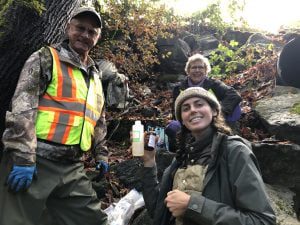
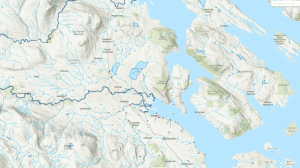
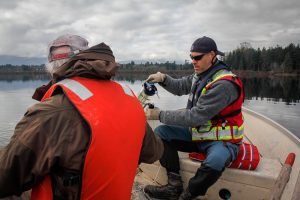
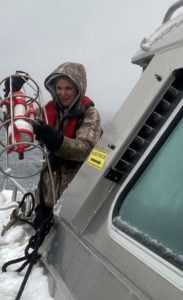
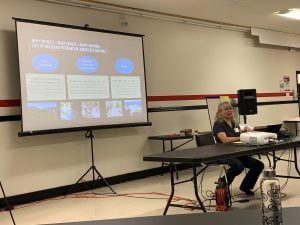
 Email
Email